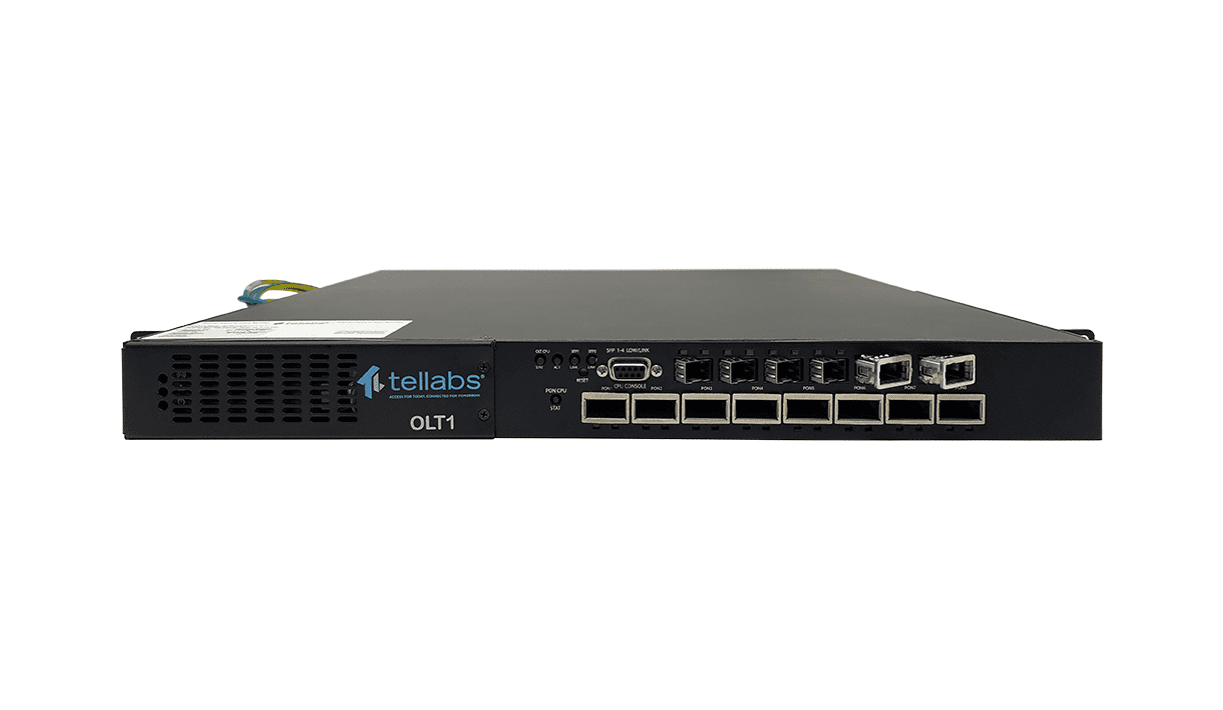The new small form-factor Tellabs FlexSym Optical Line Terminal One is light on space, energy, and costs, with XFP selectable 10G XGS-PON or G-PON for right-sized enterprise LAN connectivity.
Dallas, Texas. February 10, 2020 (GLOBE NEWSWIRE) – Tellabs, the leading provider of Passive Optical Network (PON) solutions, announces that Tellabs® FlexSym Optical Line Terminal One (OLT1) has entered the Limited Availability product lifecycle process and will now move forward with customer trials.
The Tellabs FlexSym OLT1 provides a small form-factor, one rack unit (RU), OLT supporting both cutting-edge symmetrical 10G XGS-PON, and traditional G-PON, in the same OLT. It provides flexible choices for designing a modern enterprise network to exactly align with contemporary connectivity such as IoT, wireless, cloud, open/shared office, and smart buildings demands. It is optimized to support the burgeoning 802.11ax WiFi6 demand sure to become critical in your network. Efficiently converge all enterprise connectivity by leveraging fiber’s limitless capacity deep into your buildings and campus by equipping the OLT1 with the precise 2.5G or 10G PON capacity that is warranted – thus, minimizing space, energy and costs.
The Tellabs FlexSym OLT1 key technical specifications include:
- 1 rack unit, 19” form factor. AC powered with redundant power supplies.
- 8-port PON service module with XFP selectable 10G XGS-PON or G-PON connectivity
- Up to 512 ONTs (64-way optical split) and up to 4,096 Ethernet port (with ONT248)
- 4-ports gigabit Ethernet and 2-ports 10 gigabit Ethernet network uplink interfaces
- Highly secure with bi-directional AES128 encryption with churning keys
- Leverages centralized intelligence with software defined networking management
- Environmentally hardened for support of a wide variety of mounting options
“When we say the OLT1 maximizes network speed, we are speaking about three distinct areas of improvement. First, the increase in 10G PON transport capacity between OLT and ONT, and second, the ability to backhaul the faster multi-rate Ethernet 1G, 2.5G, 5G and 10G end-points, and third, we are talking about the ability to support a greater number of Ethernet end-points,” said Rich Schroder, Tellabs President and CEO. “These three capacity improvements are imperative gains in order to satisfy the increasing future demands of our customers’ IoT, wireless, cloud, and smart buildings requirements.”
You can see the Tellabs FlexSym OLT1 in action at a 10G XGS-PON demonstration at BICSI Winter Conference 2020 in Tampa, Florida, from February 10th through 12th (EXFO booth #1031). To get more information about this showcase, you can visit our BICSI Winter Conference 2020 online resource page.
***
About Tellabs
Tellabs is leading the future of networking with access solutions for today, poised to deliver modern high-performance solutions for the future. Fast and secure access has never been in more demand for enterprise and government connectivity. Tellabs’ sole focus is to deliver simple, secure, scalable and stable access to optimize network performance. Tellabs has delivered carrier-class access solutions to service providers for more than two decades. We are now expanding that leadership by defining the future of enterprise networking that connects the campus, buildings and inspires people. For more information, please visit tellabs.com.
Media Contact
John Hoover
+1-707-206-1751
john.hoover@tellabs.com
A copy of the original GlobeNewswire news release distribution can be viewed here.
